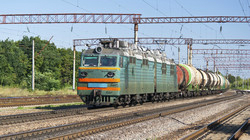Europe-Asia Railway Transport: Issues and Prospects
Asian countries account for about 42 % of European trade. Sea freight carries the bulk of goods, but rail potentially offers advantages such as shorter travel times and access to landlocked countries. Yet, a number of issues remain before rail becomes a sustainable intermodal alternative to air and maritime transport, which the EU-funded NEAR2(opens in new window) (Network of European – Asian rail research capacities) project addressed. The 13-member consortium identified technology needs, knowledge gaps, market and policy issues to be addressed to improve the physical infrastructure, services and operations across the European-Asian rail corridors. Doing so requires introduction of new technologies and capacity for interoperability, integration and harmonisation starting with the legal step-by-step harmonisation in the states participating in the trans-Eurasian corridors. The NEAR2 Rail Research Network brought together and engaged research centres in a continuous and fruitful international cooperation, supporting policy decision, exploiting the market potential and improving operations in the Europe-Asia rail corridors. It comprises members of the European Rail Research Network of Excellence (EURNEX) and 20 associate member institutions from the Czech Republic, Ukraine, the Russian Federation, India, China and Lithuania. Consortium results suggest sustainability of the trans-Eurasian railway concept, given certain conditions are met. The project defined and documented the key issues, offering solutions detailed in ten Concept Documents. Each Document reflected the outcome of a separate Working Group. Topics included: strategy and economics, operations and system performance, rolling stock, product qualification methods, intelligent mobility, safety and security, energy efficiency, plus infrastructure and signalling. Remaining items covered human and social factors, plus training. The Documents were validated by a group of experts, including industry representatives and researchers who participated in three workshops organised by the project. The project's final publication detailed relevant policy information from the EU, China, India, Kazakhstan, Russia and other Asian countries. The publication also documented existing rail services and commodities currently transported by rail. The consortium recognised the need to document additional candidate commodities, potential routes and ways of interfacing the rail link with other forms of transportation. NEAR2's network yielded suggestions for improving and operating a Europe-Asia freight rail transport system. The concept should mean improved EU trade with Asia.



